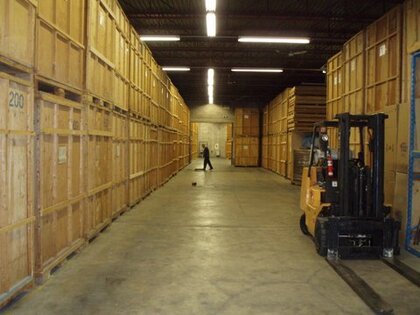How to Prepare Your Items for Storage
There are many reasons that people choose to put their belongings into storage. Maybe you have decided to declutter or have chosen to downsize your home—or maybe you are currently in transition between two cities. No matter what your situation, warehousing presents an accessible, cost-effective solution for anyone looking for temporary or flexible storage solutions.
For the past 30 years, Bird’s Moving & Storage has maintained a 15,600 square foot warehouse space to securely protect and store our customers’ most cherished items. Our storage facilities are meticulously clean and well-organized, monitored 24 hours a day, and protected by a state-of-the-art security system. Furthermore, our computerized tracking system allows us to keep an inventory of items which have been stored with us, and we perform a complete inventory of all items upon drop-off!
While in our care, your items will be placed into enclosed storage pallets, while furniture items will be padded using quilted blankets and placed into assigned pallets for extra protection.
But we are often asked—what should I do to ensure the safety and longevity of my things while stored? While our team implements the above steps to guarantee that your belongings remain pristine while in our care, we have prepared this list of tips and best practices to outline some of the ways that you can help with the process!
Assess which items need to be stored and which could be donated
Storage can be costly in the long-term. Be sure that the items you have chosen to store are things you really want to keep. As Marie Kondo would say, if it no longer “sparks joy,” or seems unlikely to get much use in the future, it might be time to let it go. If you have chosen to let go of these items, consider donating them to a local charity like Goodwill or The Salvation Army rather than sending them straight to the landfill.
Clean, condition, and disassemble your furniture
When preparing furniture pieces for storage, gently wipe or vacuum the surface to remove any excess dirt. Proceed to apply the appropriate conditioner, furniture spray, or wax to seal the wood and reduce the risk of developing mold. To ensure all the pieces stay in optimal condition, we suggest disassembling to the greatest extent possible and storing detached pieces and hardware together to prevent loss or mixing. From there, we will ensure that all edges or protruding elements are secured before crating.
But what about appliances?
Appliances can be tricky, but not unmanageable, to store. Begin by emptying and thoroughly cleaning the appliance. We suggest using a bleach solution or baking soda to remove all germs and bad odours. Ensure that water or other liquids have been drained from all errant hoses, nooks, and crannies to reduce the risk of mold or mildew. Then, secure, or if possible, remove, any attached cables or hoses. If these can be removed, we recommend storing them inside the appliance.
Do not store hazardous materials
It should be a no-brainer, but under no circumstances should flammable or corrosive items— firearms, food, plants or other living things, money, or stolen property—be stored. Unfortunately, you will have to seek alternative arrangements if you need to store such items away from you!
Some additional tips:
· Mattresses should be carefully inspected for signs of infestation and placed in a storage bag designed specifically for mattresses to protect against dirt, moisture, and pests
· If possible, clothes should be stored upright on a rail to keep them ventilated and wrinkle-free.
· Books should be as dry as possible before being packed flat in small boxes to avoid damage to the spines
· Fragile items should be individually wrapped in paper or bubble wrap. Ensure that packing boxes are adequately padded with crumpled paper, bubble wrap, or textiles and labelled “Fragile” or “Handle with care.”
· Electronics should be stored in their original boxes. If unavailable, wrap them first in paper and secure with anti-static bubble wrap. Before packing, ensure that you have removed the batteries from devices that require them.
· Tools should be stored in a toolbox. If unavailable, use strong small or medium boxes. Wrap sharp tools in bubble wrap and secure with tape to ensure that each is fully secured. Remove batteries and drain gas before from power tools before storing them.
Bird’s Moving & Storage has been serving the Niagara Region’s moving, packing, and storage needs since 1933. If you have an additional storage-related questions, or to receive a quote, visit our website today!





